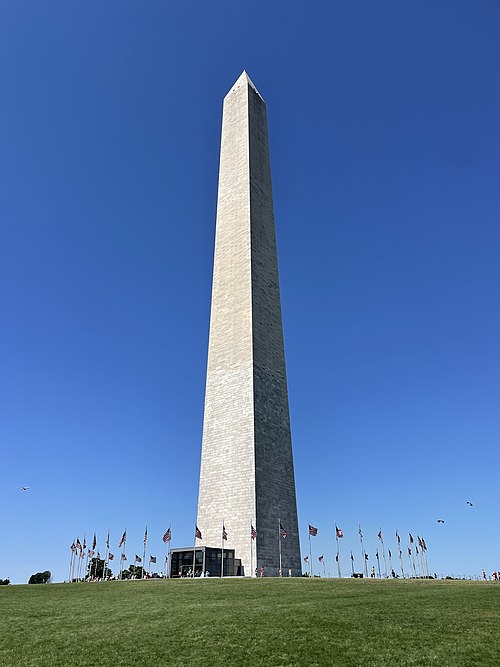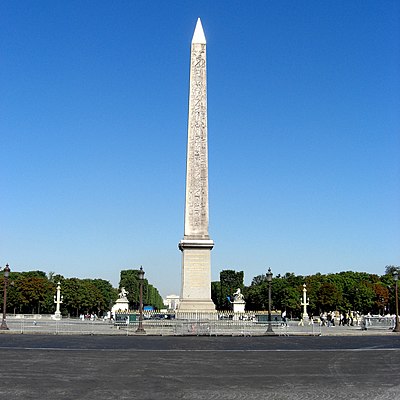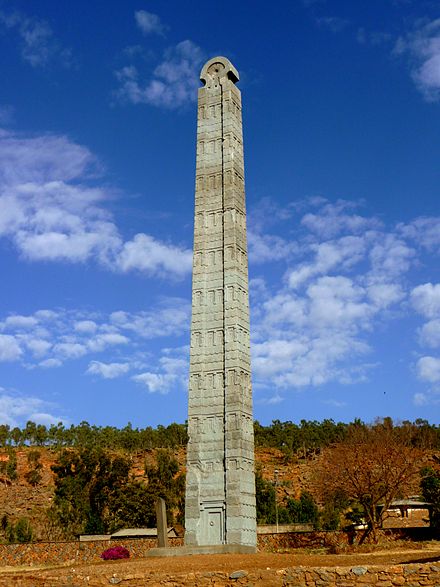Top 10 Most Amazing Obelisks In The World

Obelisks, those towering monolithic structures, stand as enduring testaments to human engineering, artistic prowess, and cultural significance. These slender giants of stone have graced cityscapes, religious sites, and historical landmarks across the globe for millennia. Each obelisk, with its unique history and design, holds within it a story of civilizations past, echoing their triumphs, struggles, and the artistry of their times.
From the monumental Washington Monument that pierces the American sky to the enigmatic Obelisk of Axum that witnesses the cradle of Ethiopian history, these stone spires traverse continents and epochs, offering insights into the intricate connections between cultures separated by time and geography. The Luxor Obelisk, now an emblem of France's alliance with ancient Egypt, and the Obelisco di Dogali, memorializing a battle but also bearing witness to Italy's colonial aspirations, remind us that obelisks serve not only as architectural marvels but also as touchstones to complex narratives.
This exploration takes us on a journey through ten of the most remarkable obelisks in the world, delving into their origins, symbolism, and the remarkable feats of engineering that brought them to their current locations. Each obelisk carries with it a distinct history, inviting us to uncover the threads that connect past and present. As we stand before these towering structures, we are reminded of humanity's enduring quest to leave a mark on the world, a quest that, in the case of obelisks, has resulted in breathtaking monuments that have defied the passage of time.
Top 10 Most Amazing Obelisks In The World
- Washington Monument, USA
- Luxor Obelisk, France
- Obelisco di Dogali, Italy
- Obelisk of Axum, Ethiopia
- Theodosius Obelisk, Turkey
- Cleopatra's Needle, UK and USA
- Obelisco de Buenos Aires, Argentina
- Obelisk of Montecitorio, Italy
- Obelisk of São Paulo, Brazil
- Heliopolis Obelisk, Egypt
1. Washington Monument, USA

The Washington Monument, standing tall in the heart of Washington D.C., is an iconic obelisk dedicated to George Washington, the first President of the United States. Constructed from marble, granite, and bluestone gneiss, it soars to a height of 555 feet, making it one of the tallest stone structures in the world. Completed in 1884, the monument's elegant design and distinct presence have made it a symbol of American pride and patriotism.
2. Luxor Obelisk, France

The Luxor Obelisk, located in the Place de la Concorde in Paris, is a remarkable ancient Egyptian artifact. Originally erected in the Luxor Temple around 3,300 years ago, it was gifted to France in the early 19th century. The obelisk is made from pink granite and stands about 75 feet tall. Carvings on its sides depict hieroglyphics and historical scenes. The Luxor Obelisk's relocation to Paris was a feat of engineering, and it now serves as a connection between ancient civilizations and modern France.
3. Obelisco di Dogali, Italy

READ ALSO » Top 10 Most Amazing/Beautiful Blackbird In The World
The Obelisco di Dogali is a tribute to the Battle of Dogali, a conflict between Italian forces and Ethiopian warriors in 1887. Located in Rome, Italy, this obelisk stands as a reminder of Italy's colonial ambitions in Africa. The monument is made of marble and stands over 70 feet tall, with intricate carvings that tell the story of the battle and the soldiers who lost their lives. It serves as both a historical marker and a point of reflection on the complexities of colonial history.
4. Obelisk of Axum, Ethiopia

The Obelisk of Axum, also known as the Aksum Obelisks, are a group of tall, slender granite pillars located in Axum, Ethiopia. These ancient monoliths, dating back to the 4th century AD, were constructed to honor various rulers and religious figures. The tallest of them, the Great Stele, originally stood around 108 feet tall before collapsing. Despite their impressive size, they were hewn from a single piece of granite and transported over long distances, showcasing the advanced engineering skills of the ancient Axumite civilization.
5. Theodosius Obelisk, Turkey

The Theodosius Obelisk, situated in Istanbul, Turkey, is an ancient Egyptian obelisk that was brought to Constantinople (now Istanbul) by Emperor Theodosius I in the 4th century AD. Made of red granite, it stands around 65 feet tall and features intricate carvings depicting scenes from its transportation and reinstallation. The obelisk originally stood in the Karnak Temple complex in Luxor, Egypt, and its relocation to Constantinople is a testament to the influence of ancient civilizations on the architecture and culture of later empires.
6. Cleopatra's Needle (UK and USA)

Cleopatra's Needle refers to a pair of ancient Egyptian obelisks, one located in London, UK, and the other in New York City, USA. These obelisks were originally erected in Heliopolis around 1450 BC during the reign of Pharaoh Thutmose III. In the late 19th century, they were gifted to the United Kingdom and the United States. The London obelisk stands on the Victoria Embankment, while the New York obelisk stands in Central Park. These obelisks serve as cultural artifacts, symbolizing the exchange of historical treasures between nations.
7. Obelisco de Buenos Aires, Argentina

The Obelisco de Buenos Aires is a prominent monument and iconic symbol of the city. Standing at the intersection of Avenida 9 de Julio and Avenida Corrientes, it reaches a height of around 221 feet. Constructed in 1936 to commemorate the 400th anniversary of the city's founding, this obelisk is made of concrete and features a simple, modern design. It has become a popular gathering place for celebrations, events, and demonstrations, serving as a testament to Buenos Aires' rich cultural history.
8. Obelisk of Montecitorio, Italy

Situated in front of the Montecitorio Palace in Rome, Italy, the Obelisk of Montecitorio stands as a historic landmark. Originally from Heliopolis, Egypt, this pink granite obelisk was brought to Rome during the reign of Emperor Augustus. It stands about 46 feet tall and is adorned with hieroglyphics that pay homage to Egyptian mythology. The obelisk's presence adds an element of ancient mystique to the political center of modern Italy.
9. Obelisk of São Paulo, Brazil
The Obelisk of São Paulo, also known as the Obelisco do Ibirapuera, stands in Ibirapuera Park in São Paulo, Brazil. Erected in 1955 to celebrate the city's 400th anniversary, it is made of reinforced concrete and reaches a height of approximately 72 feet. The obelisk's design is modern and sleek, reflecting the mid-20th-century architectural sensibilities. It serves as a point of interest within the park, blending contemporary aesthetics with historical commemoration.
10. Heliopolis Obelisk, Egypt

READ ALSO » Top 10 Most Amazing Wizarding World Of Harry Potter Attractions
The Heliopolis Obelisk, also referred to as the Obelisk of Benben, remains partially unfinished at the ancient site of Heliopolis in Cairo, Egypt. The obelisk is believed to date back to the reign of Pharaoh Senwosret I (around 1971–1926 BC). Carved from red granite, it was likely intended for a temple but was abandoned due to structural defects. Despite its incomplete state, the Heliopolis Obelisk offers insights into the ancient quarrying and carving techniques used by ancient Egyptian craftsmen.
If In the shadow of these magnificent obelisks, we find ourselves standing at the intersection of history, art, and culture. These stone sentinels, whether soaring over cityscapes or standing humbly in remote corners of the world, tell tales of civilizations long gone, beckoning us to explore the depths of human achievement. From the Obelisk of São Paulo's modern design to the timeless grandeur of the Heliopolis Obelisk, each monument reflects the aspirations and ingenuity of its era.
As we contemplate these enduring structures, it becomes clear that obelisks are more than just physical remnants of the past; they are windows into the hearts and minds of those who crafted them. The convergence of artistry, architecture, and history embodied by these stone giants inspires us to continue unearthing the narratives that have shaped our world. In appreciating these obelisks, we honor the past while also charting our own course into the future, leaving our own indelible mark on the annals of time.
